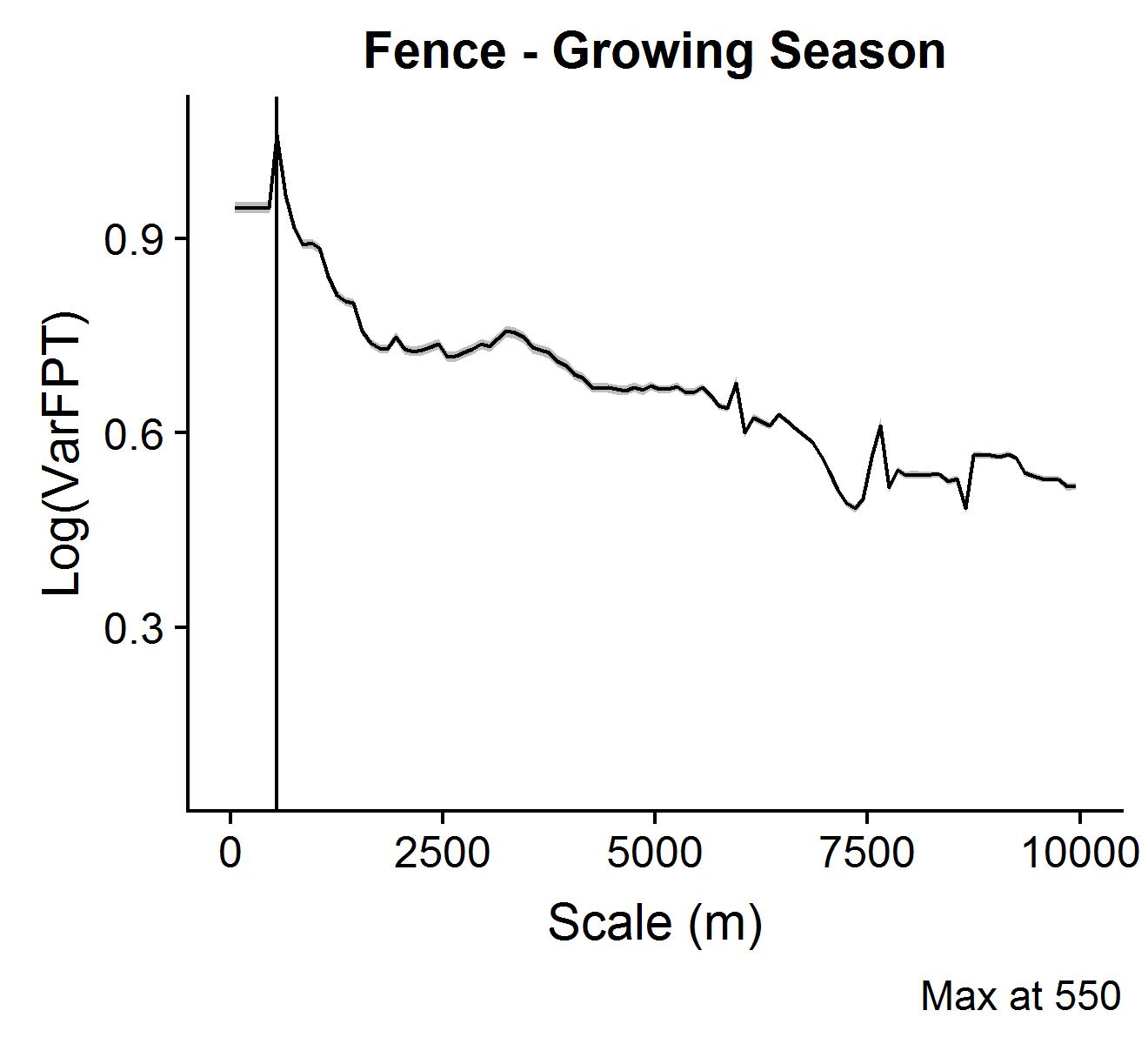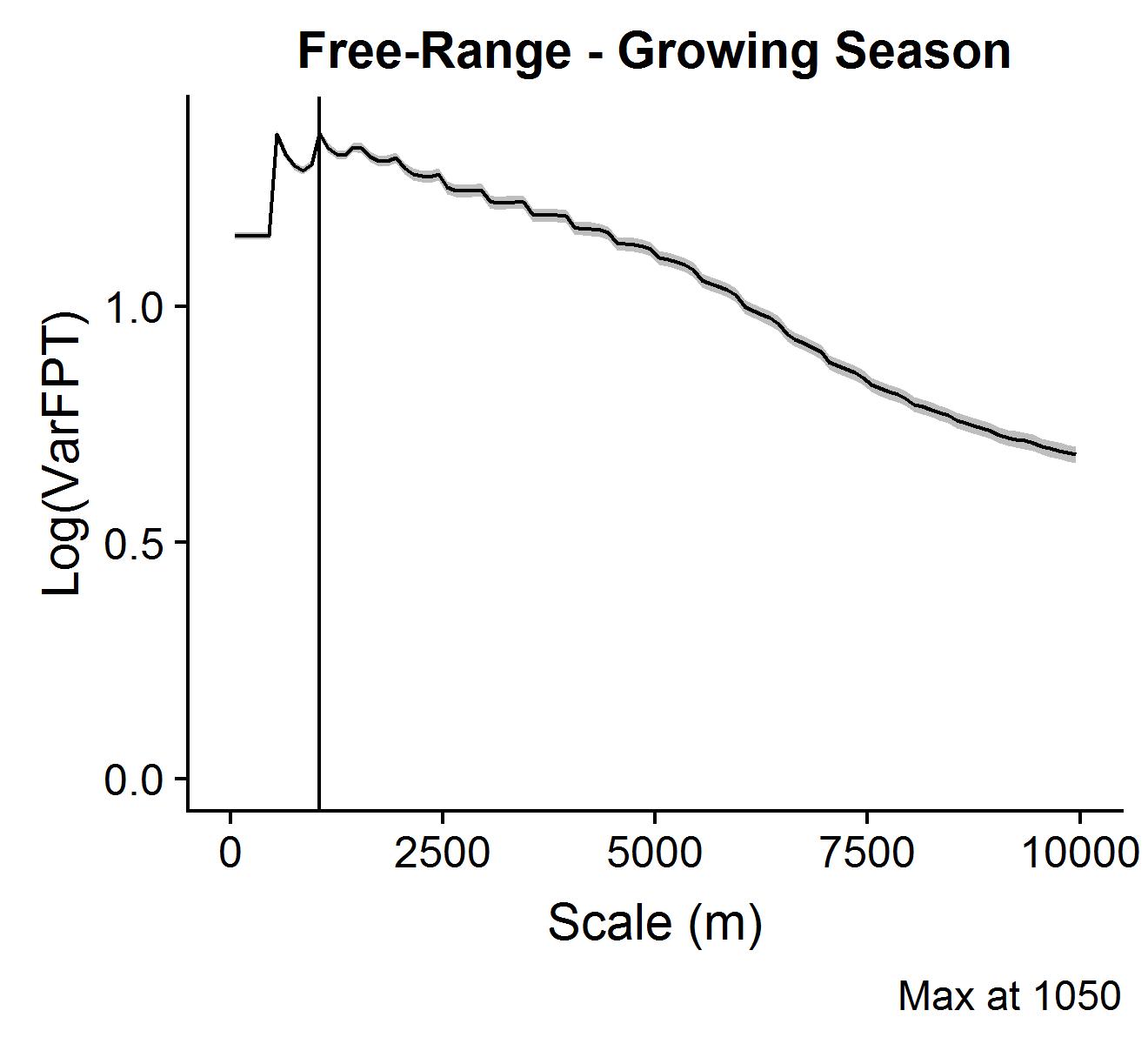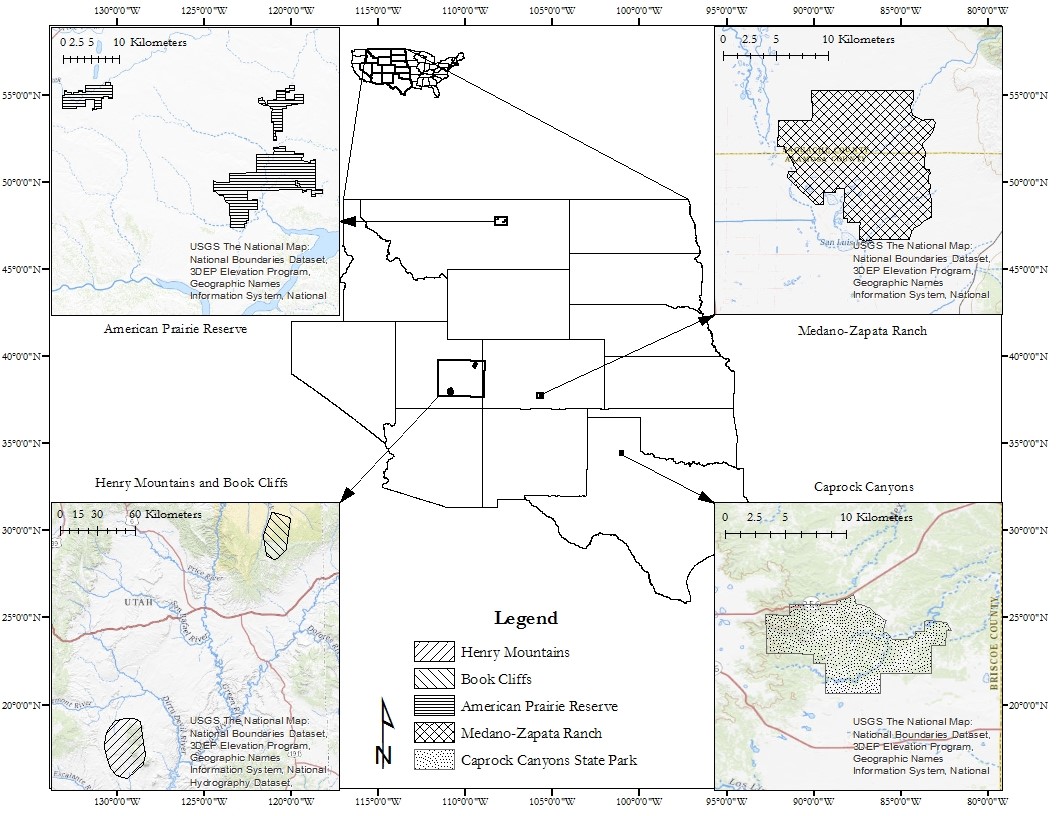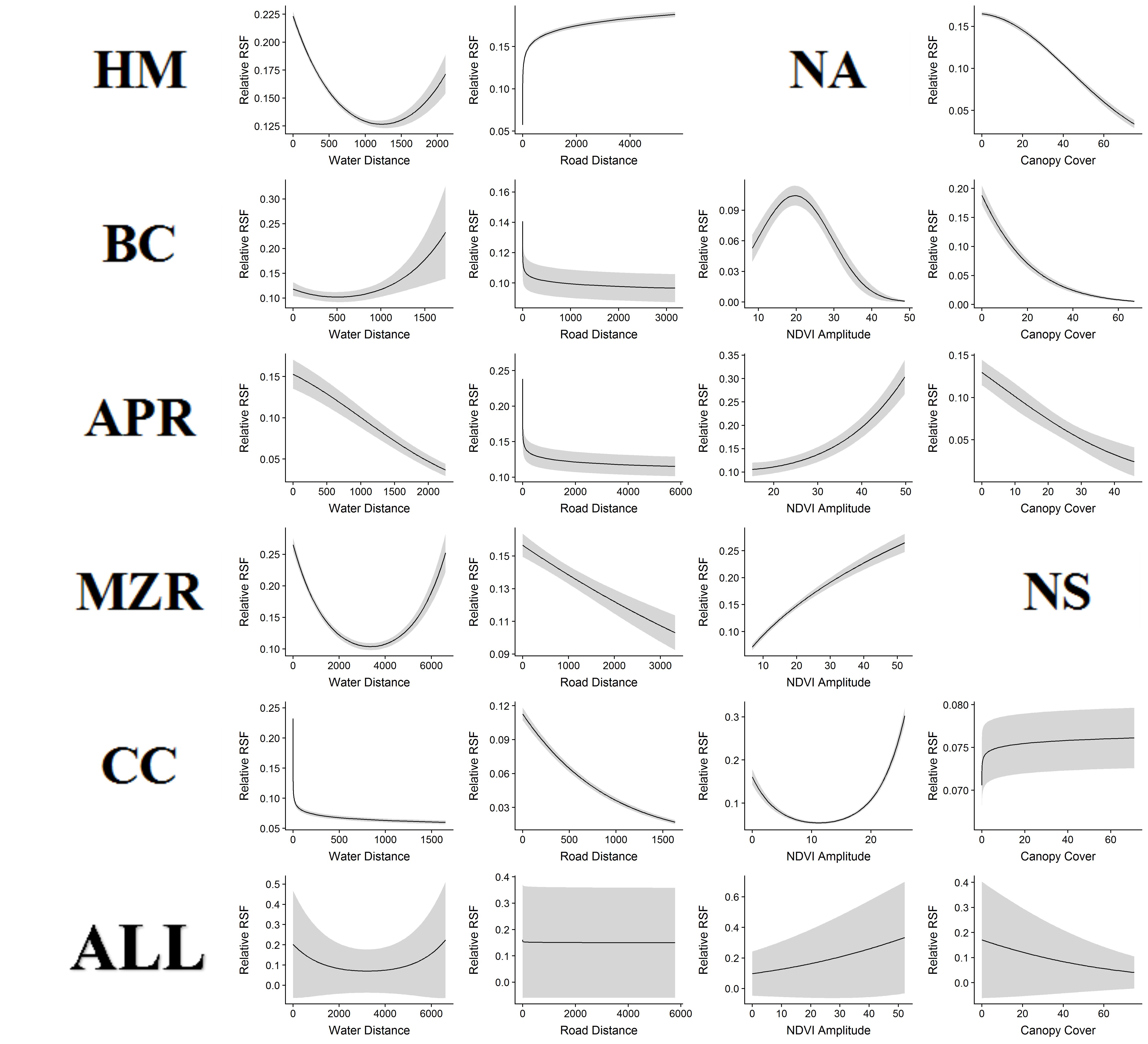Bison
145,577 locations
5 study areas
16 attributes
Bison
145,577 locations
5 study areas
16 attributes
My master’s thesis examined the space-use and resource selection patterns of five variously managed bison herds to ascertain ecological function. I was particularly interested in how these patterns varied between free-range herds and fenced herds.
One of the major spatial aspects I was interested in was how much space bison required to be ‘ecologically effective’. I looked at two aspects of this including home range size which I modeled using autocorrelated kernel density estimates and forage patch size which I estimated using first-passage time analysis. My most interesting finding was that home range size appeared to significantly differ between herds while forage patch size did not. This has implications for the scale at which we conserve and manage bison. 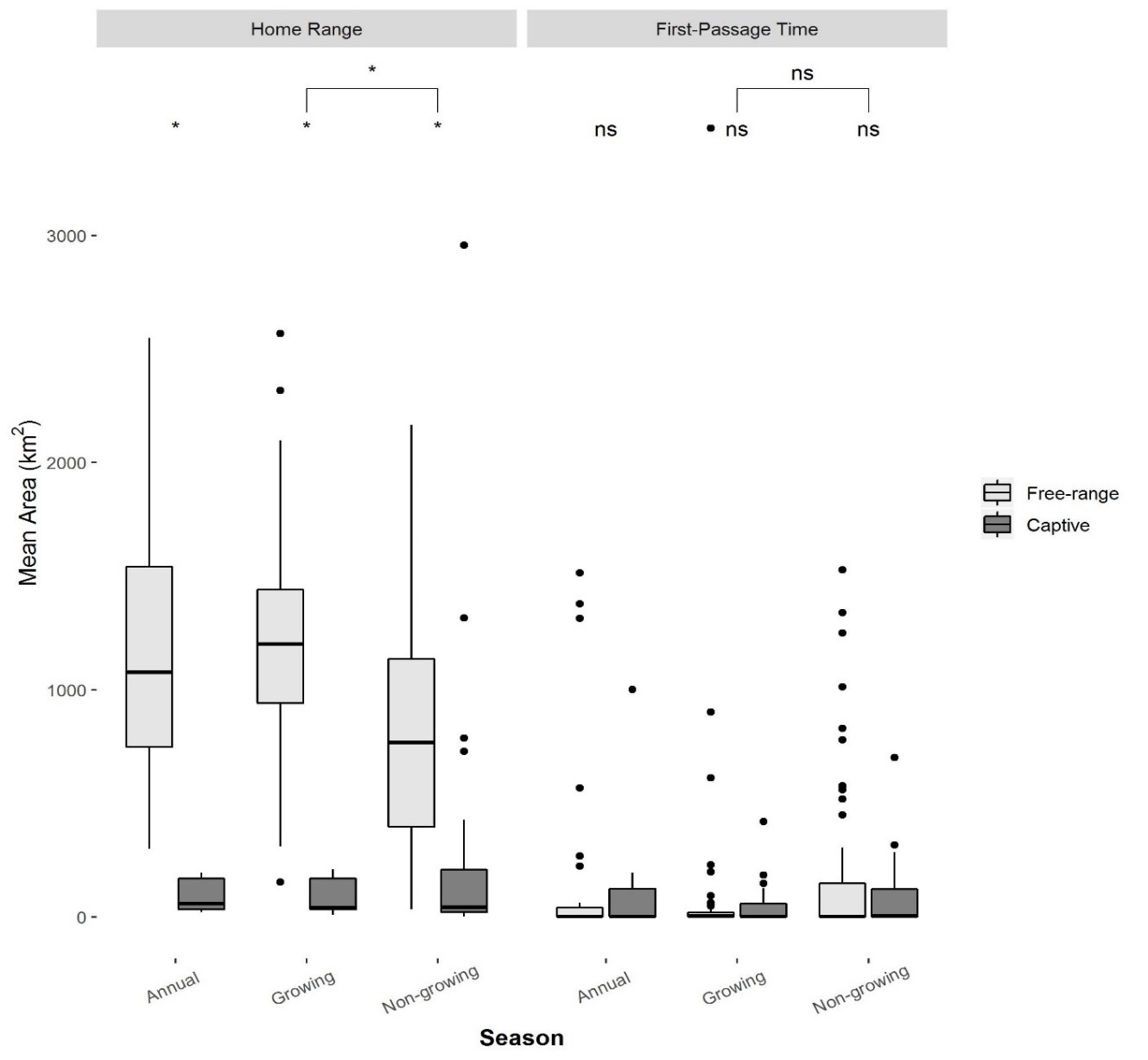
Bison home range estimation
Model outputs of covariate influences on home range sizes.
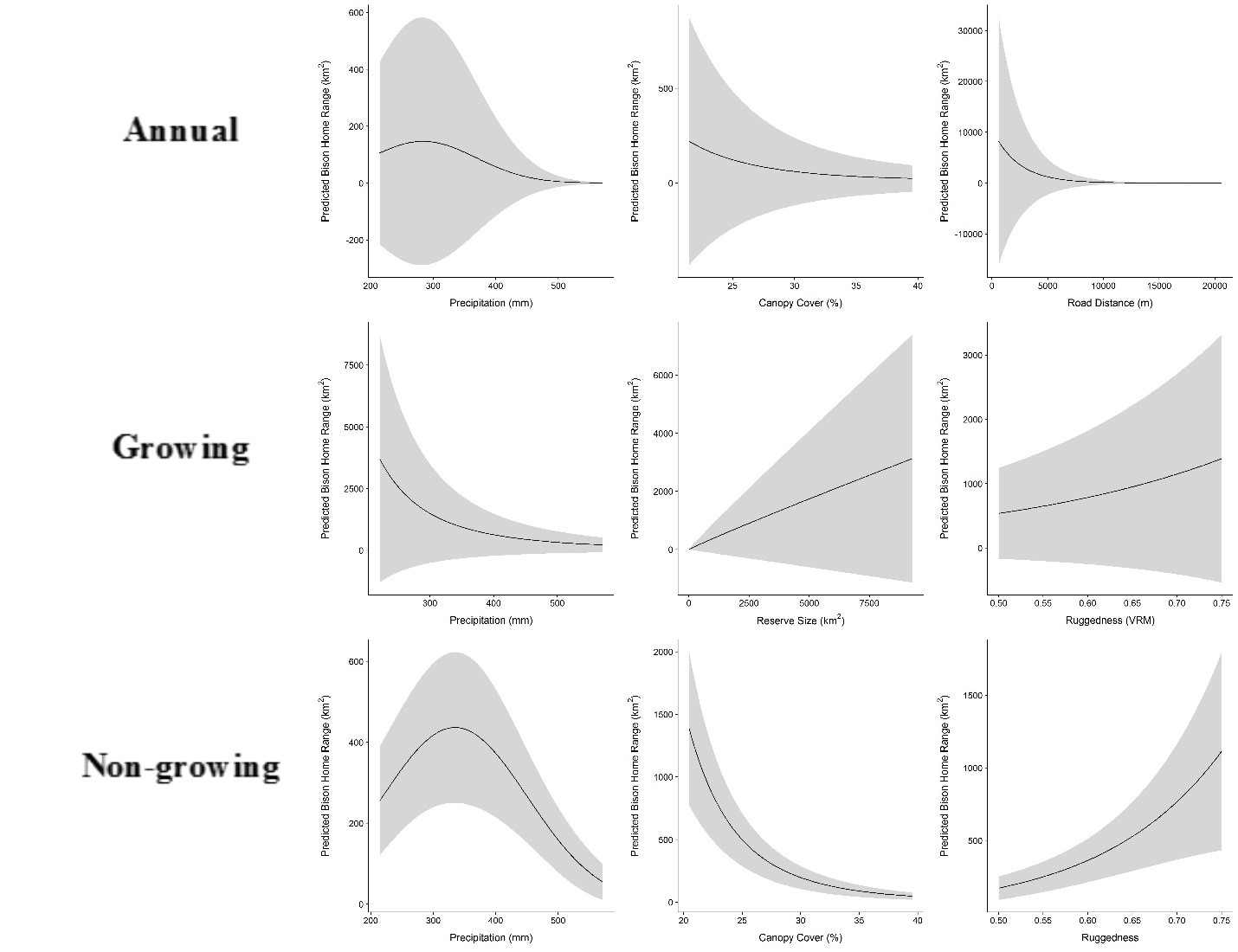
During the growing season, free-range bison appear to forage at larger scales than fenced bison.
